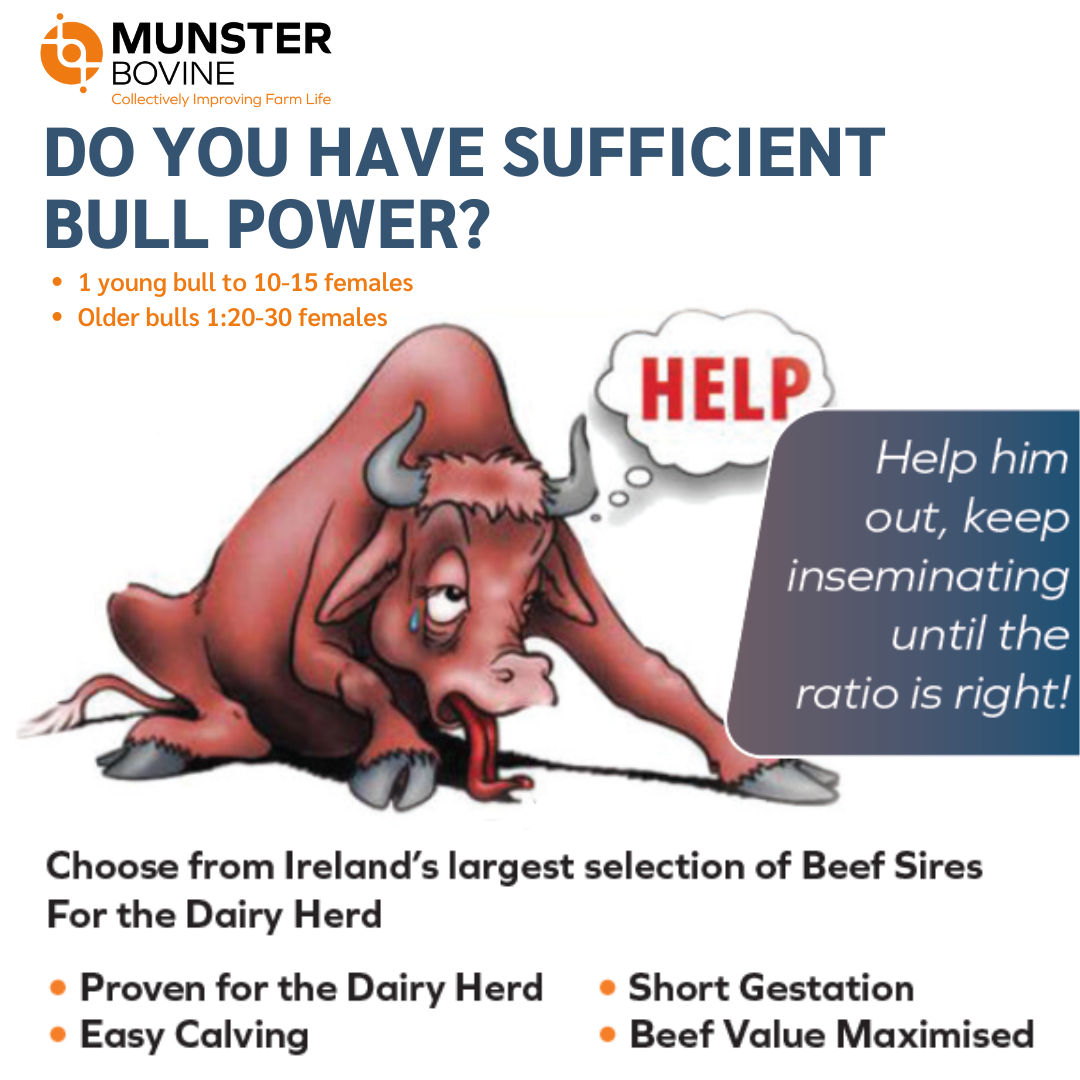News
Ensure Sufficient Bull Power – Keep Up AI
Stock bulls are often an essential component of the breeding season on many farms. As mounting activity decreases, stock bulls can be helpful to pick up empty cows, reducing empty rates.
It is often believed that once the stock bull is introduced, A.I. can finish and the hard work of the breeding season is over. However, in the transition to a stock bull, a lull in your calving pattern may result next spring. Continuing to A.I. after introducing the stock bull works very well and as acts as an insurance policy to ensure you have a successful calving season next year.
There are many advantages of continuing to A.I. after the introduction of the stock bull:
- Bulls need time to settle into a routine once they have been left off with the cows. It can take a stock bull up to two weeks to settle once he has been introduced and so A.I. should continue for this period.
- It can prevent bulls from becoming overworked. Adequate bull power is required for compact calving. One young bull is needed for every 10 empty females and one mature bull for 20-30 empty females. Until this ratio of bulls to cows is reached, A.I. needs to continue. Also, if more than two cows are in heat per mature bull on one day, then these should be inseminated, this is particularly important to remember for herds that are using synchronisation protocols. Following synchronisation, repeats will all occur in a short period, 18 – 24 days post synchronised AI.
- Subfertility is a relatively common issue with bulls and unless their performance is being closely monitored, a sub fertile bull may go undetected until it is too late. Subfertility can be due to low sperm quality or quantity, low libido or health issues such as lameness, injury or disease - high temperatures in particular can cause low fertility. If any issues arise, the bull should be rested and treated accordingly. Before reintroducing these bulls into the breeding program, their fertility should be retested. Some bulls may not recover for the rest of the breeding season. The impact on a herd from a sub fertile bull can be reduced by continuing to A.I. alongside the stock bull.
- Bulls need to be closely monitored for any change in BCS (body condition score). Bulls that rapidly lose weight, greater than 50kg, over a short period of time can be sub fertile. Young bulls in their first season need to be fed as they are still growing and so need this extra energy. They also use more energy courting than mature bulls.
- For late calvers, the use of short gestation dairy beef bulls for A.I. can gain you an extra 7-10 days next year.
- Don’t forget to be vigilant around stock bulls – if they show signs of aggression towards you, your family or farm workers, get them to a factory.
If you do decide to rely on your stock bull in the later stages of the breeding season, monitor his performance using tail paint, scratch cards or by fitting him with a chin-ball. This will allow you to monitor repeats and not be caught out by a poor performing bull.

Related Articles
Selective Dry Cow Therapy - Milk Matters December 2025

NEW BASE REVEALS A DECADE OF GENETIC PROGRESS - Milk Matters November 2025

Milk Matters Oct. 25 - Munster Bovine's Herd Health Programme

Milk Recording - Milk Matters July 2025
